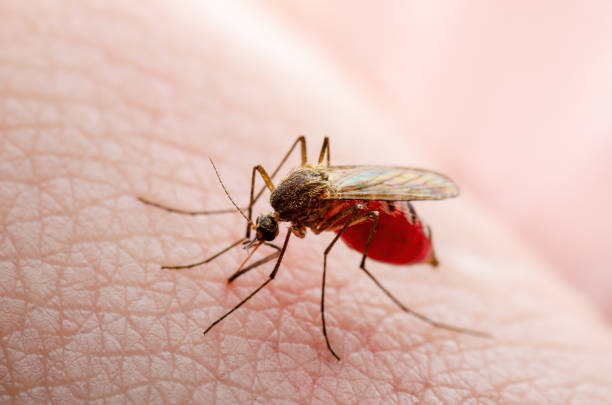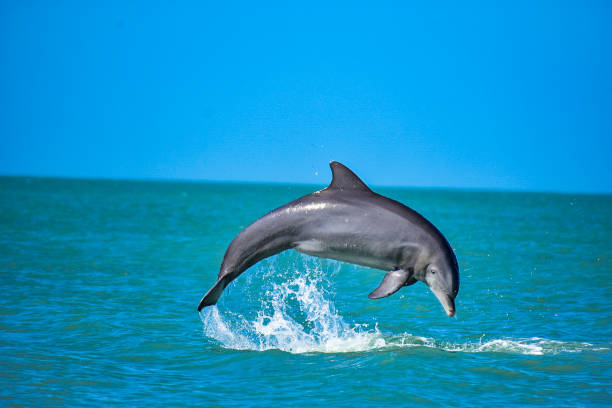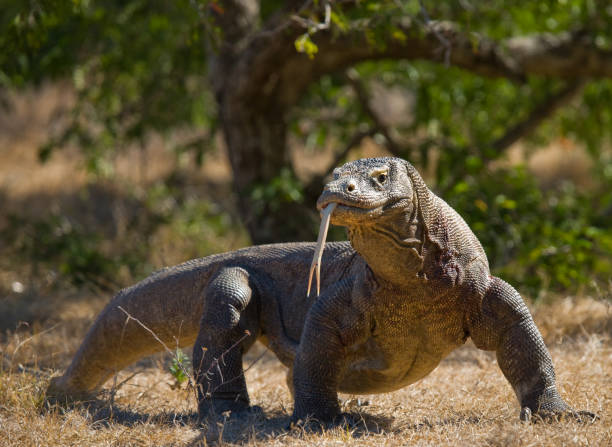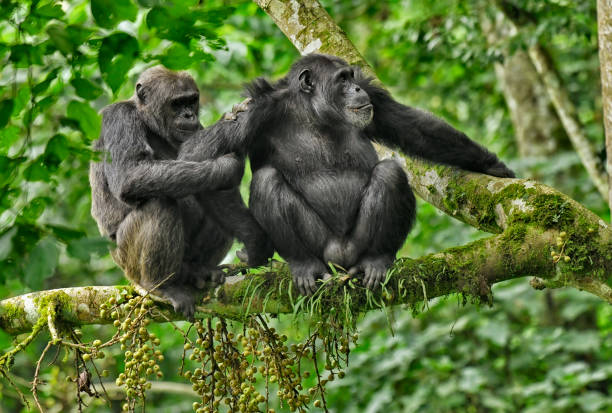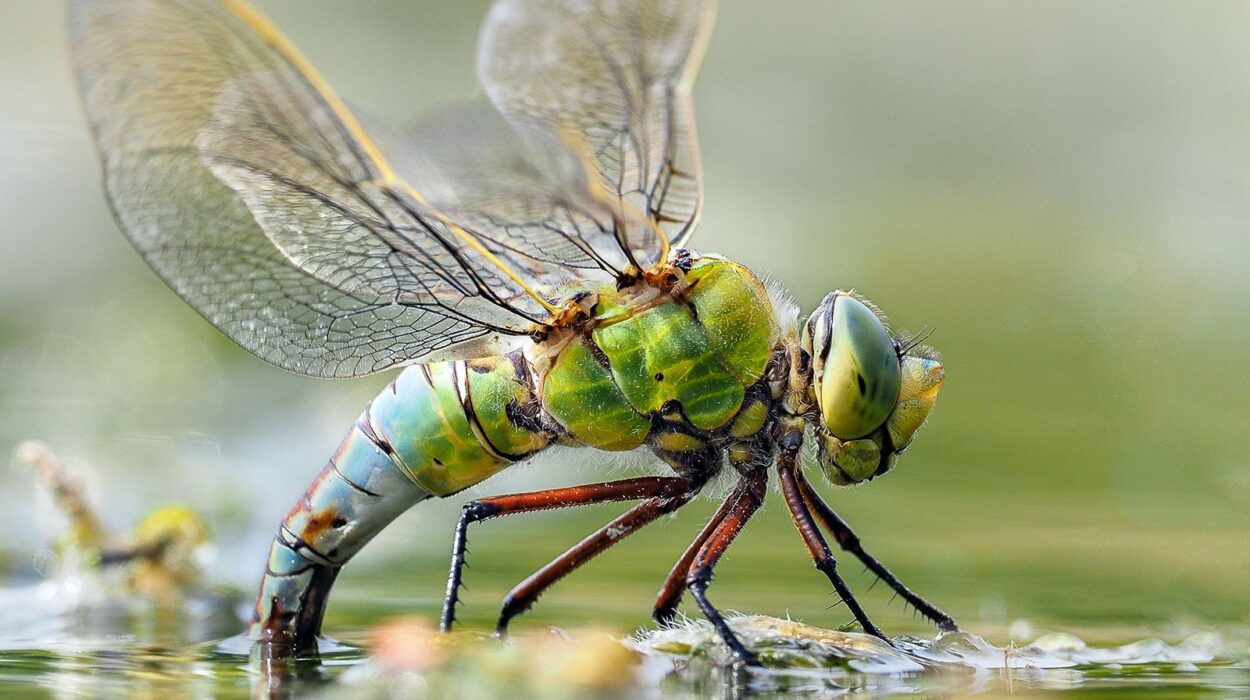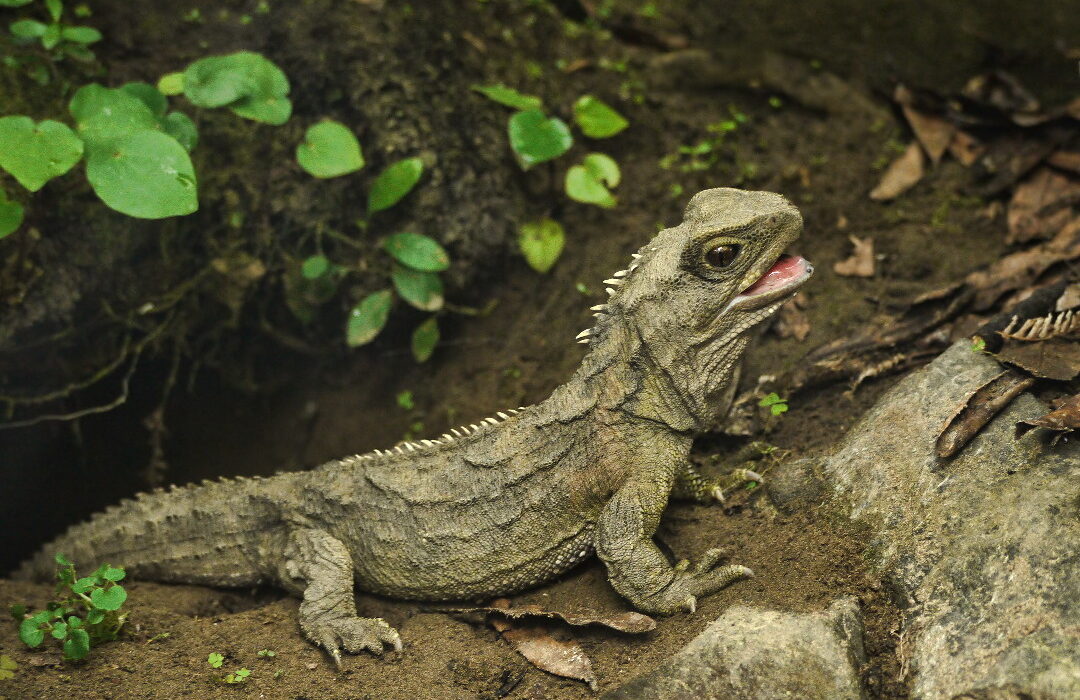There’s something hauntingly beautiful about the world of insects. Beneath the shimmer of butterfly wings and the rhythmic hum of bees lies a darker side of nature—a hidden kingdom where silent assassins crawl, sting, and kill with quiet precision. The deadliest insects on Earth aren’t giants; they don’t roar or snarl. They are small, often delicate, and yet they wield the power to cripple or kill creatures thousands of times their size, including humans.
To some, they’re monsters. To scientists, they’re marvels—perfectly evolved biological machines designed to survive. Each one carries the echo of millions of years of evolution, a reminder that danger often wears the smallest disguise.
These are the ten deadliest insects on Earth—creatures whose beauty and lethality coexist in perfect, terrifying balance.
1. Mosquito – The Silent Reaper of Humanity
No insect has claimed more human lives than the mosquito. It’s a fragile creature, lighter than a paperclip, yet responsible for the deaths of more than 700,000 people every year. The mosquito doesn’t kill with fangs or venom; it kills with disease.
There are over 3,500 species of mosquitoes, but only a few—like the Anopheles, Aedes, and Culex—are true executioners. These tiny bloodsuckers are vectors for some of the deadliest diseases known to humankind: malaria, dengue fever, Zika virus, yellow fever, and West Nile virus.
When a female mosquito pierces skin with her needle-like proboscis, she doesn’t just drink blood; she injects saliva containing anticoagulants and, often, parasites or viruses. The Anopheles gambiae, for example, carries the Plasmodium parasite responsible for malaria—a disease that has shaped human history, decimated populations, and continues to haunt tropical regions today.
What makes mosquitoes truly terrifying is their adaptability. They breed in puddles, gutters, and even bottle caps. They evolve resistance to insecticides and thrive in warming climates. They are, in every sense, nature’s most efficient killers—proof that death doesn’t need claws or teeth to be unstoppable.
2. Tsetse Fly – The Assassin of the African Plains
Across the sun-scorched savannas of sub-Saharan Africa buzzes the tsetse fly, an unassuming-looking insect with a deadly secret. About the size of a housefly, it carries within its bite a microscopic killer: the Trypanosoma brucei parasite, which causes African trypanosomiasis, better known as sleeping sickness.
The disease begins with fever, headaches, and joint pain. But as the parasite invades the central nervous system, the victim experiences confusion, sensory disturbances, and a disruption of the sleep cycle. Eventually, the body shuts down; without treatment, death is inevitable.
Each tsetse fly lives only a few months, but during that time, it can infect dozens of humans and animals. Entire regions of Africa have been rendered uninhabitable for agriculture because of these insects, whose bite can cripple livestock and devastate communities.
Scientists have battled tsetse flies for decades, using traps, sterile insect programs, and genetic control methods. Yet, they remain resilient—tiny vampires of the savanna, carrying sleep and death in equal measure.
3. Kissing Bug – The Romantic Killer
With a name like “kissing bug,” one might imagine something harmless, even charming. But this insect’s “kiss” is anything but romantic. Found in the Americas, especially Latin America, the kissing bug—or Triatomine bug—is the stealthy vector of Chagas disease, a potentially fatal illness that affects the heart and digestive system.
At night, these insects creep into homes, attracted by the carbon dioxide humans exhale. They feed on blood, often biting near the lips or eyes—hence the name. But the real danger isn’t in the bite; it’s in what comes after. When the bug defecates near the wound, its feces contain Trypanosoma cruzi, a protozoan parasite. As the victim scratches the itch, the parasite enters the bloodstream.
Chagas disease can remain silent for years, slowly damaging the heart and intestines until sudden cardiac arrest or organ failure occurs. The World Health Organization estimates that around six to seven million people are infected worldwide.
The kissing bug’s lethality lies in its deception—its gentle touch masks an invisible killer, a parasite that can take decades to claim its victim.
4. Asian Giant Hornet – The Murder Hornet
With its armor-plated body, venomous sting, and orange-and-black warning colors, the Asian Giant Hornet (Vespa mandarinia) looks like it came straight out of a nightmare. Measuring up to two inches long, it’s the world’s largest hornet—and arguably one of its most terrifying.
Nicknamed the “Murder Hornet,” this predator is a lethal force both to humans and to other insects. Its venom contains powerful neurotoxins capable of destroying tissue and triggering allergic reactions that can cause death. A single sting is excruciating, described by victims as “like having a hot nail driven through the flesh.”
In Japan, where the species is most notorious, hornet stings kill dozens of people each year. But what truly makes them infamous is their behavior toward honeybees. A small group of Asian Giant Hornets can slaughter an entire beehive in hours, decapitating bees with surgical precision and feeding their larvae the soft remains.
When the hornets arrived in North America, scientists and beekeepers raced to contain them. For now, their spread remains limited—but their presence serves as a reminder that sometimes evolution crafts monsters that look like armored soldiers, swift and merciless.
5. Bullet Ant – The Pain That Burns Like Fire
Deep in the rainforests of Central and South America lives an ant whose sting is the most agonizing of any insect on Earth. The Bullet Ant (Paraponera clavata) earns its name from the sensation its sting produces—a pain so intense it’s said to feel like being shot.
Justin O. Schmidt, the entomologist famous for creating the “Schmidt Pain Index,” ranked the Bullet Ant’s sting as a perfect 4.0—the highest rating possible. Victims describe the pain as “pure, burning, throbbing agony” that can last up to 24 hours.
The venom contains poneratoxin, a neurotoxic peptide that affects voltage-gated sodium channels in nerves, causing uncontrollable waves of pain and temporary paralysis.
For the indigenous Satere-Mawé people of Brazil, the Bullet Ant is part of a rite of passage. Boys must wear gloves filled with dozens of the ants, enduring hours of stings to prove their strength and manhood. It’s a ritual that turns pain into power—a testament to both the cruelty and the beauty of nature’s design.
Though rarely deadly to humans, the Bullet Ant’s sting symbolizes the fine line between survival and suffering in the wild—a reminder that pain itself can be a weapon.
6. Driver Ants – The Living Army
In the heart of Africa, the ground itself sometimes moves. It’s not an illusion—it’s a swarm of Driver Ants, also known as Siafu. Numbering in the millions, these ants form living rivers of destruction, devouring everything in their path.
Driver Ants don’t rely on venom or disease; their weapon is sheer overwhelming force. Each ant has massive, scissor-like mandibles capable of slicing through flesh. Individually, one ant is a nuisance. Collectively, they are a force of nature.
When food is scarce, columns of Driver Ants march across the forest floor, consuming insects, reptiles, birds, and even small mammals. Any animal caught in their path is overwhelmed, cut to pieces, and carried back to the nest within minutes.
For humans, the danger lies in being immobilized. There are stories—some myth, some real—of infants or elderly people left helpless during a swarm and being consumed alive.
Driver Ants are nature’s perfect soldiers—organized, relentless, and utterly fearless. Their colonies move with precision, their unity turning the smallest creatures into an unstoppable army.
7. Tse-Tse Fly – The Lethal Carrier of Sleep
While the mosquito reigns supreme in death tolls, the tsetse fly’s method of killing is disturbingly personal. Unlike mosquitoes that sip blood in passing, tsetse flies deliver a piercing bite that injects both saliva and a dose of Trypanosoma parasites, causing sleeping sickness.
Each bite is a gamble with fate. The victim’s blood nourishes the fly, but in return, the parasite begins its slow, sinister journey through the bloodstream to the brain. Victims first experience fever, joint pain, and fatigue. As the disease progresses, the nervous system becomes infected, leading to personality changes, confusion, and the infamous “sleeping” symptoms that end in death.
Entire ecosystems have been shaped by the tsetse fly’s presence. Livestock die, people flee fertile lands, and development halts. Few creatures, despite their small size, have had such profound geopolitical and ecological impact.
The tsetse fly doesn’t kill in swarms or bites; it kills civilizations.
8. Botfly – The Parasitic Nightmare
If you’ve ever felt your skin crawl, meet the human botfly (Dermatobia hominis)—an insect that doesn’t just bite but burrows. Native to Central and South America, this gruesome parasite uses a horrifyingly clever method of attack.
A female botfly captures another insect—often a mosquito—and lays her eggs on its body. When that mosquito bites a warm-blooded animal, the botfly eggs hatch, and the tiny larvae burrow into the host’s skin.
What follows is a slow, unnerving process: the larva feeds on flesh from within, growing beneath the skin, creating a raised, painful lump that throbs with life. Victims often feel the larva moving inside them.
After weeks of feeding, the maggot finally bursts out, leaving a gaping wound. While rarely fatal, the experience is traumatic and can lead to infection.
The botfly’s gruesome life cycle is both horrifying and ingenious—a living testament to nature’s ability to adapt in ways that defy imagination.
9. Fire Ant – The Fiery Swarm
Beneath our lawns, fields, and sidewalks lurk colonies of Fire Ants, deceptively small but capable of causing immense pain and even death. Native to South America but now found across the world, particularly in the southern United States, these ants are notorious for their aggressive defense and venomous stings.
When a nest is disturbed, thousands of ants swarm upward, biting and stinging simultaneously. Their venom, containing alkaloid toxins, causes burning pain, pustules, and allergic reactions. In rare cases, people experience anaphylactic shock that can be fatal.
But the true danger lies in their numbers. Fire Ants operate with terrifying coordination—like a living storm. Their colonies can reach hundreds of thousands of individuals, each ready to defend the queen to the death.
They’ve been known to kill small animals, blind livestock, and invade homes, hospitals, and electrical equipment. In nature’s theater of pain, Fire Ants are the fiery dancers—beautiful, disciplined, and devastatingly efficient.
10. Fleas – The Ancient Spreaders of Plague
Tiny, wingless, and easily ignored, the flea may not seem deadly at first glance. But history remembers otherwise. Fleas, especially the Oriental rat flea (Xenopsylla cheopis), were responsible for one of the darkest chapters in human history: the Black Death.
In the 14th century, these insects carried the bacterium Yersinia pestis, transmitting it from rats to humans. The result was catastrophic—the bubonic plague swept through Europe, killing an estimated 50 million people.
Even today, fleas remain carriers of various diseases, including murine typhus and tapeworms. They reproduce explosively, jump incredible distances, and are nearly indestructible survivors.
Their legacy is a chilling reminder that death can ride on the smallest of creatures. In every plague-ridden alleyway and every ancient battlefield, fleas were silent witnesses—and agents—of history’s greatest biological disaster.
The Science of Death in Miniature
What unites all these insects isn’t size or strength but design. Evolution has shaped them into perfect agents of survival and, by extension, of death. Whether through venom, parasites, or sheer numbers, they exploit every biological loophole available.
Their senses are sharper, their instincts honed. Mosquitoes detect carbon dioxide from 50 meters away. Ants coordinate with chemical trails so precise they rival computer algorithms. Hornets communicate with body vibrations that organize attacks within seconds.
Death, in their world, isn’t cruelty—it’s strategy.
The Human Connection
For centuries, humans have waged war against these insects, from ancient fumigation rituals to modern genetic engineering. Yet, even as we fight them, we can’t help but marvel. Their lethality is not evil; it is evolution’s masterpiece—a reminder that life’s brilliance and brutality are inseparable.
These creatures have shaped civilizations, altered genetics, and rewritten geography. Mosquitoes control where people live. Fleas reshaped Europe’s history. Tsetse flies define African economies.
The deadliest insects on Earth are not villains—they are nature’s ruthless teachers, forcing us to confront the limits of our control.
The Final Word
In the quiet buzz of a mosquito or the shimmer of a hornet’s wing lies the heartbeat of the wild—a reminder that we are guests in a world far older and wiser than our own species.
Every deadly insect, from the mosquito to the bullet ant, is a story of adaptation and resilience. They kill not out of malice, but necessity. Their world is one of survival, efficiency, and precision—an ecosystem where death feeds life.
So the next time you swat a fly or hear the hum of a mosquito near your ear, remember: you’re hearing the echo of evolution’s oldest conversation. The tiniest creatures often hold the greatest power, and in their silence, they speak of life’s most profound truth—that danger, beauty, and survival are forever intertwined.
